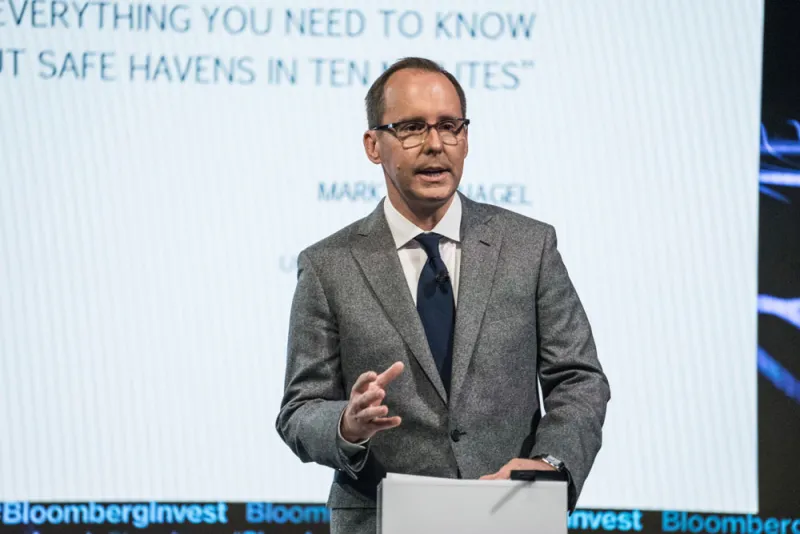The California Public Employees’ Retirement System has argued that it ended its tail-hedge risk-mitigation program in favor of a traditional diversification strategy because of the high costs of tail hedging.
Universa Investments, which ran the largest part of CalPERS’ tail-hedge program, says that’s bunk.
CalPERS ended its tail-risk hedging program earlier this year, missing out on more than $1 billion in gains when markets cratered in March. CIO Ben Meng defended the move at the time, telling Institutional Investor, “We terminated explicit tail-risk hedging options strategies because of their high cost, lack of scalability, and the fact that there are better alternatives available to CalPERS.” Since then the issue has become a flash point for the pension, the CIO, and the board of trustees.
Now Universa is disputing Meng’s defense.
“It is important for me to rebut what has been claimed in public by no less than the new CalPERS CIO that their conventional diversifying risk-mitigation strategy has been less costly, and thus more effective, than Universa’s ‘explicit, options-based’ convex risk-mitigation strategy,” Ronald Lagnado, formerly of CalPERS and now Universa’s director of research, wrote in a letter to clients obtained by Institutional Investor. Lagnado recently joined Universa after five years with CalPERS, having led the implementation of the tail-risk program for the pension system.
Lagnado continued: “This is a fairly common claim, not particularly unique to him, and neither Universa, nor I, take offense from this. It would not typically be our practice to respond to a public statement of this sort by a former client (redeeming shortly after the new CIO arrived). However, the public nature of the comment, and the hope of preventing others from succumbing to the same common pitfalls, has compelled me to write this memo.”
In response to Universa’s letter, CalPERS’ said in a statement: “We have gone on record stating that options-based tail-risk hedging is a valid strategy for some investors. Given our unique needs, we chose a strategy that we believe is better aligned with CalPERS’ pension liabilities, investment portfolio, and long-term investing horizon.” A spokeswoman also pointed to MSCI’s and AQR’s recent research on other diversification strategies. (Universa declined to comment on its letter. However, through spokesman, founder Mark Spitznagel addressed AQR’s research specifically: “Universa’s 12 years of results speak for themselves. Back tests from naive researchers are an unfortunate distraction.”)
Lagnado argues that the events at CalPERS are a good case study of how tail-risk hedging can be misunderstood.
[II Deep Dive: The Inside Story of CalPERS’ Untimely Tail-Hedge Unwind]
The effectiveness of a tail-risk program has to be judged by the effect on the total portfolio, according to Universa. Tail-risk hedging should lower losses, and as a direct result, raise the rate at which the portfolio compounds.
Since the firm’s founding in 2007 by Spitznagel, Universa has gauged its performance through a hypothetical portfolio made up of a 3.33 percent position in its tail hedge, with the remainder in the ETF SPY, which tracks the performance of the Standard & Poor’s 500 and is a proxy for the risk that the investor is trying to hedge, according to the firm.
By contrast, CalPERS is using a hypothetical 60-40 portfolio for risk mitigation, with 60 percent of the assets invested in the Standard & Poor’s 500 and 40 percent invested in the Barclays US Aggregate Bond Index. Over 12 years, Universa calculated that, “the conventional proxy portfolio did not demonstrate much in the way of value-added risk mitigation. In fact, over this 12-year horizon, it demonstrated some destruction of value, presumably in the name of risk mitigation.” It was, however, successful in 2020 year-to-date, and in 2008.
Over the 12-year period, the compound annual growth rate was 1 percent less than the S&P 500, which resulted in an 11.3 percent cumulative loss for the portfolio, according to Universa.
By contrast, the compound annual growth rate of the Universa portfolio beat the growth rate of the S&P 500 by 3.6 percent over the 12 years that the firm studied. That translates, according to Lagnado, into a 47.9 percent gain in the value of the portfolio, or terminal wealth.
“The typical mild diversifying strategies, such as in our conventional proxy portfolio, provide so little relative protection in bad markets. Large allocations to the strategy are required; because of that, the protection becomes an immense drag in good markets—what Mark Spitznagel calls ‘the plague of diworsification”’ wrote Lagnado.







